GREEN TOUR
Discover the secrets of the flora and fauna of our natural environment.
Green Tour
Barberry
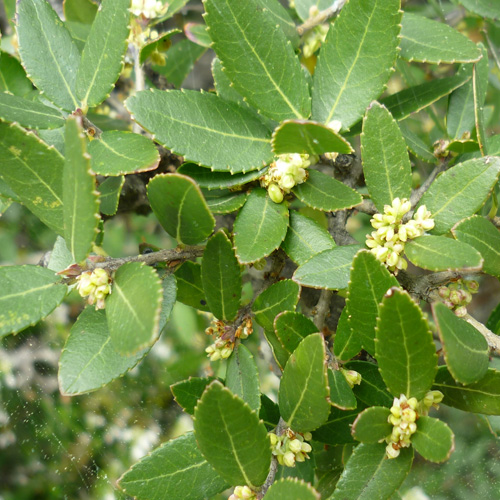
Phillyrea latifolia
It’s an evergreen shrub that can grow to more than 9 m in height. Whitish, smooth branches, with the young ones covered with hairs. The leaves are opposite and are deep green on the upper side and a lighter green on the lower side. The flowers are small and greenish white. It blooms in spring and the fruits ripen in autumn.
Lentisk, Mastic
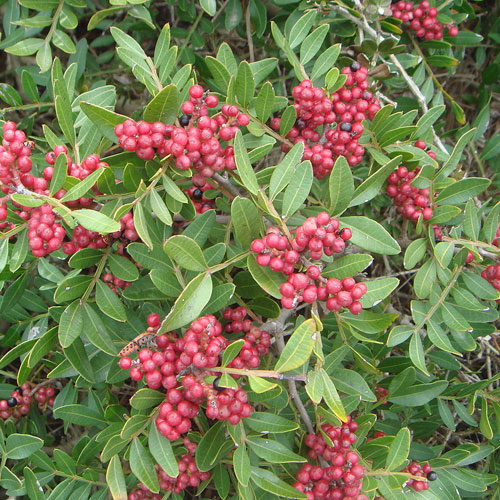
Pistacia lentiscus
It has separate male and female plants (dioecious), which means that it can reproduce by itself. Evergreen, from 1 to 5 m high, with a strong smell of resin, it grows in the dry and rocky scrublands in Mediterranean Europe, North Africa and the Near East. It resists heavy frosts and grows on all types of soils, and can grow well in limestone and even salty or saline areas, which makes it more abundant near the sea. Its name comes from its lentil-shaped leaves.
Olive, Olive tree
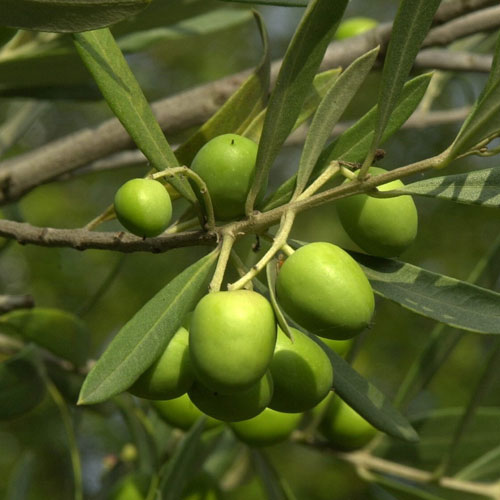
Olea europea
It’s a long-lived evergreen tree, which can grow up to 15 m in height, with a spreading crown and thick trunk, with a twisted appearance. Its bark is shallowly fissured, gray or silver in color. Its fruit is the olive, from which olive oil is obtained. The oldest olive tree in the world is found in the Bethlehem district of Palestine and is estimated to be more than 4,000 years old.
Tree germander, Bush germander
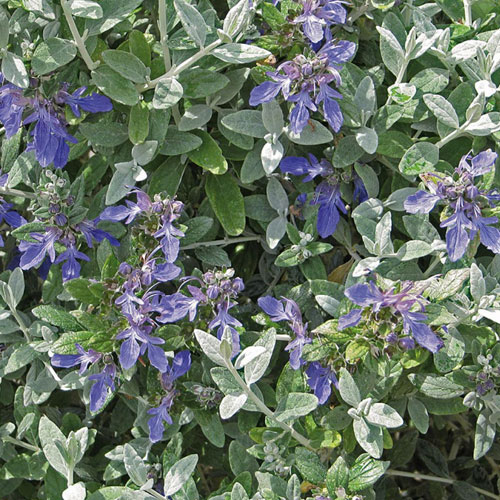
Teucrium fruticans
This plant with beautiful gray foliage native to the Mediterranean basin is commonly found in gardens across Spain, including public gardens. It’s a plant that’s highly resistant to drought and pests, hence its popularity in gardening. It grows to a maximum height of 2 meters, although it’s usually found between 50 and 150 cm.
Asparagus
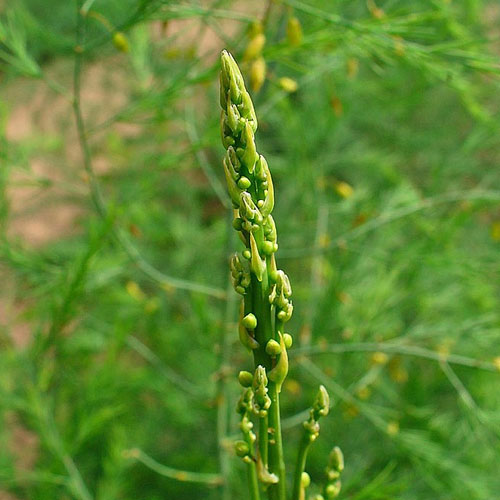
Asparagus officinalis
The asparagus plant consists of branched aerial stems and underground parts made up of roots and buds, which are commonly called the “claw”. The vegetables known as “asparagus” are obtained from the young shoots. It flowers from June onwards. Here’s a fun fact: the diuretic properties of Asparagus sp, especially of the roots, are well known. This is due to its high silicon content, among other minerals, glycosides, sugars, amino acids, etc.
Pomegranate, Granada
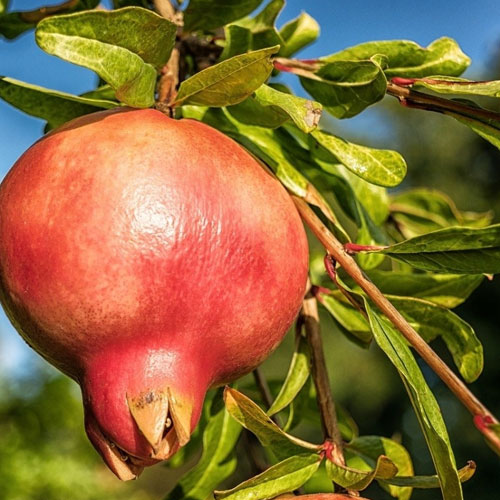
Púnica granatum
It’s a large shrub or small tree that, although thorny, has been cultivated since ancient times in the Mediterranean. It’s remarkably drought-tolerant, so much so that it can go for months without receiving a single drop of water and withstands high summer temperatures very well. It was established in the Iberian Peninsula during the time of the Moorish invasion and the city of Granada was named after it.
Prostrate Canary clover
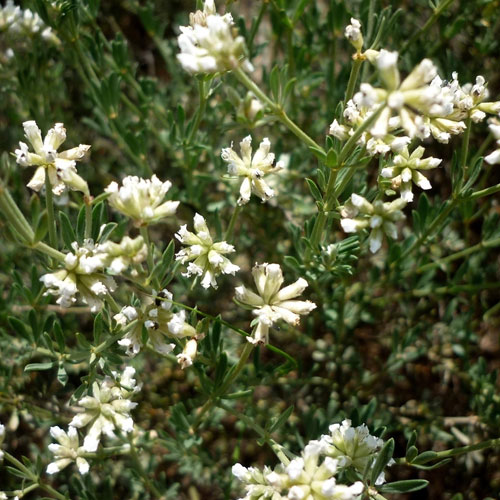
Dorycrium pentaphyllum
It’s widespread in some parts of the northern Mediterranean and North Africa. It’s found throughout the Iberian Peninsula, and also in the Balearic Islands. It lives in scrublands and pastures of the Mediterranean regions and the montane forest floor, up to an altitude of 1,600 m. Indifferent to the type of soil (calcareous or siliceous); it grows well in stony, sandy and clayey soils, and tolerates those that are moderately saline and also those that are poor in nutrients and organic matter.
Holm oak, Evergreen oak
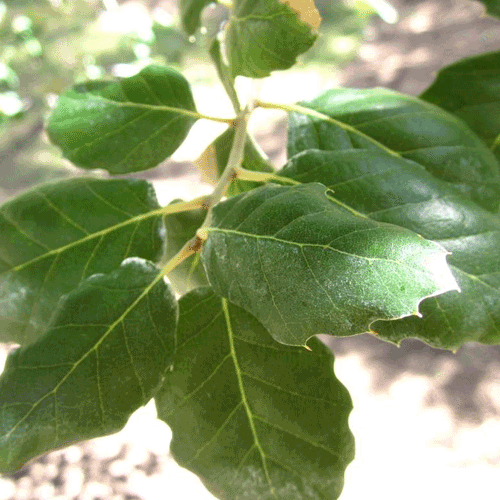
Quercus ilex
It’s an evergreen shrub that can grow to more than 9 m in height. It prefers dry climates (xerophytes), one of the most iconic plants of the Mediterranean climate and belongs to the Fagaceae family. Its wood is very hard, slow-growing, and has been used to make tools, different handles. It was also used to obtain charcoal for many years.
Aleppo pine, Jerusalem pine
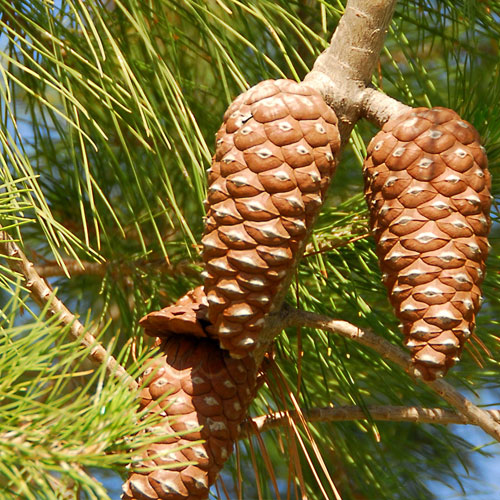
Pinus halepensis
It can grown to 25 m in height. Its trunk is large and twisted, with a whitish gray bark and irregular crown with small cones. It tolerates aridity very well, and its branches and bark are grayish in color. It’s the only native Mediterranean pine and is the most resistant to unfavorable environmental conditions—so much so that it’s the only one that takes root and grows out amidst rocks facing the sea. It has also been the inspiration for many a poem and painting.
Cork oak
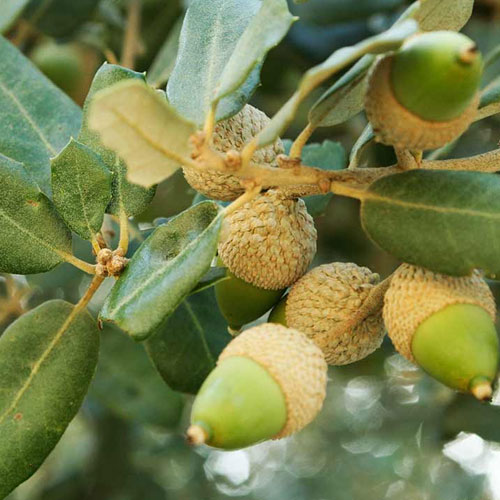
Quercus suber
It’s a tree native to Europe and North Africa. Anthropically widespread due to the exploitation of its bark from which cork is obtained. The cork oak is also known in some local regions, as “chaparro” or “roble sobrero” particularly the young specimens. In Begur, it was one of the major drivers of the economy during the time of the “indianos” (the Spanish who had emigrated to Latin America and returned home fabulously wealthy), and is an economic activity to this day.
Rock rose, sun rose
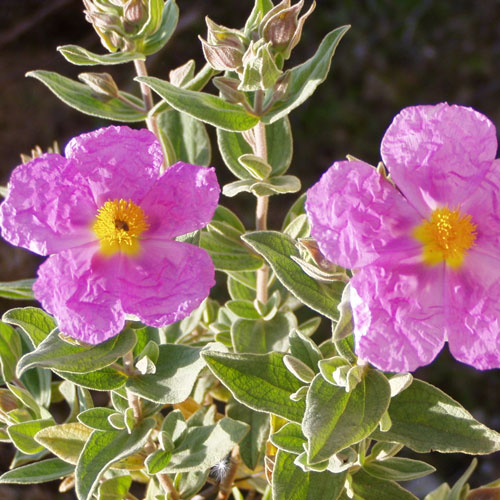
Cistus albidus
A Mediterranean plant that’s very common in most communities, preferably on calcareous soil. Very frequent in oak forests. It’s a shrub that’s between 40 cm to 1 m high, with whitish leaves because of the hair they have. Cistus albidus is a family of about 170 different species. Cistus albidus is the most common in our region and is named after the Latin “albidus”, which means white, which symbolizes the plant. Historically, some species have been used as a diuretic and anti-hysteric or relaxant.
Blackberry
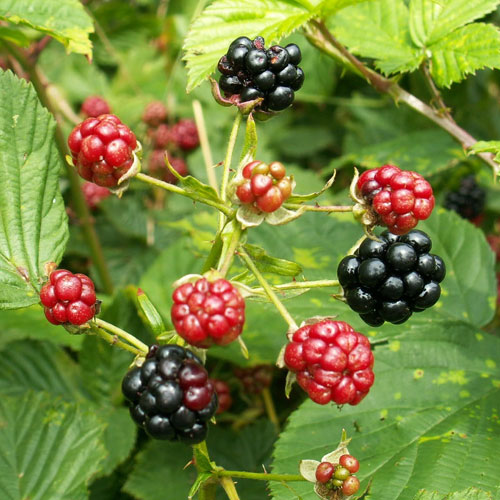
Rubus fruticosus
A very common plant in our region ranging from mountainous areas to the seashore. It lives in humid forest clearings, where it’s a very characteristic species. It’s a thorny plant with canes up to 10 m long, flowering from June to August. It has pink flowers, which are sometimes white at the base of the petals, with five petals and five sepals (the entire Rosaceae family has this flower structure). It’s a very interesting plant due to its resistance to any type of terrain and altitude, in addition to the use of the fruit, the blackberry. It’s highly appreciated for its culinary applications and great for making jams and preserves.
Our Fauna
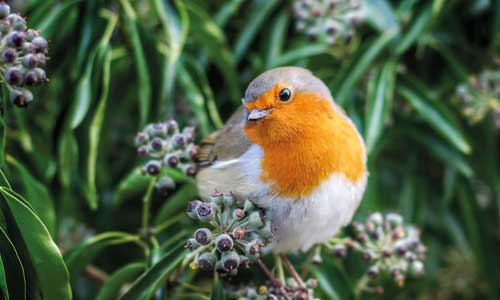
EUROPEAN ROBIN
(Erithacus rubecula)
The robin is one of the most iconic and beloved birds in Europe due to its distinctive appearance and beautiful song. Its deep red chest and belly contrasts with its back, head and wings with their darker colors.
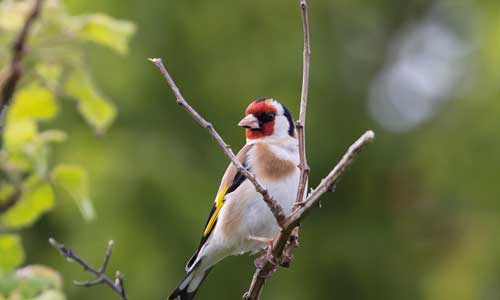
EUROPEAN GOLDFINCH
(Carduelis carduelis)
This charming species is native to Europe and has a unique beauty and melodious song, which is why it’s so appreciated by all nature lovers. In ancient Roman mythology, goldfinches were associated with the goddess of love, Venus.
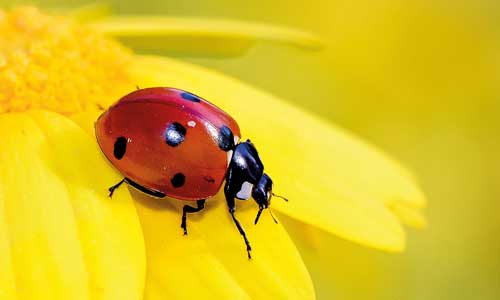
LADYBUG
(Coccinellidae)
One of the most striking insects known. Their colors range from yellow, orange and red with small black specks on their wing cases.
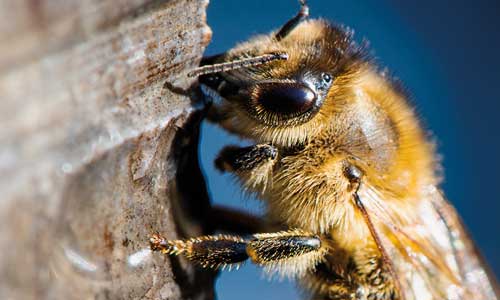
BEE
(Anthophila)
Its name means “flower-loving” in Greek and there are more than 20,000 known species. Since its habitat requires flowering plants so it can feed on their pollen and nectar, it is found on every continent except Antarctica, and it is said that there are many more species that have not yet been discovered.
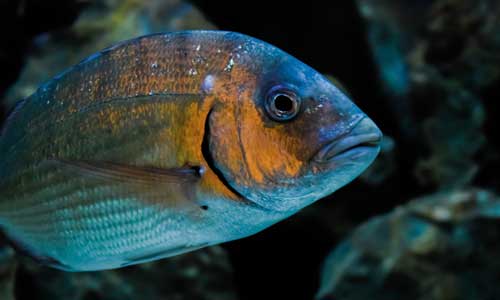
GILT-HEAD BREAM
(Sparus aurata)
This fish is highly appreciated both in sport fishing and in gastronomy due to its exquisite meat and delicate flavor. The gild-head bream has a compact, oval body, with silver-colored scales that reflect the sunlight in the water. Its fins are golden in color, which gives it its common name.
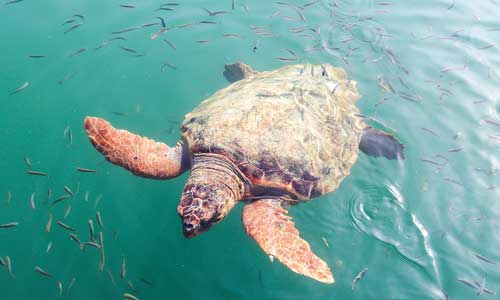
LOGGERHEAD SEA TURTLE
(Caretta caretta)
It’s one of the most distinctive turtles due to its beautiful heart-shaped shell and colorful carapace, making it a wonderful symbol of marine life and conservation.
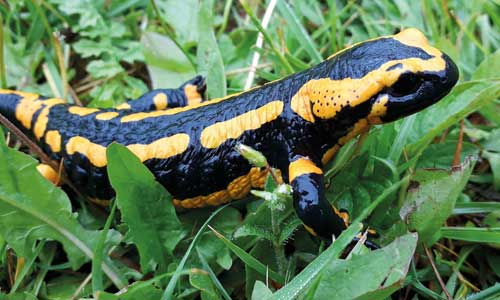
FIRE SALAMANDER
(S. salamandra)
The salamander is an amphibian that is entirely terrestrial as adults. It looks like a cross between a frog and a lizard, and in dry season, it takes refuge in damp places, fountains and caves. It’s active in rainy weather and mostly nocturnal. Its reproduction depends on the existence of pools of clean water where its tadpoles can live.
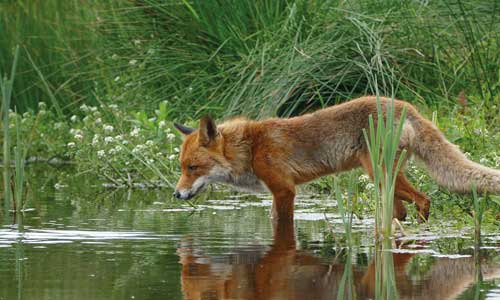
RED FOX
(Vulpes vulpes)
It’s one of the most widespread species of canids in the world, and its beauty and cunning have made it a legendary character in many cultures. It’s able to thrive in different environments and its intelligence and hunting skills make it a successful predator. It uses its acute sense of hearing and smell to locate its prey, and its agility and speed to catch them.
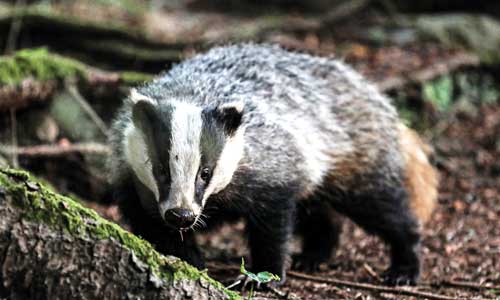
EUROPEAN BADGER
(Meles meles)
The dark bands on this mammal’s head make it easily identifiable.
The European badger can live for a long time without eating, as it accumulates large fat reserves in autumn. However, its diet is very varied: from fruits to mice, including roots and tubers. The badger’s acute sense of smell is about 800 times better than humans’.
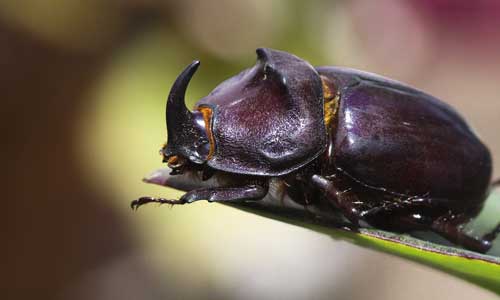
EUROPEAN RHINOCEROS BEETLE
(Oryctes nasicornis)
It neither stings, bites nor charges. Nevertheless, the harmless rhinoceros beetle has a feisty appearance and is considered the strongest known animal in the world. Some experiments suggest that this armored and horned creature can lift loads that exceed 850 times its own weight.
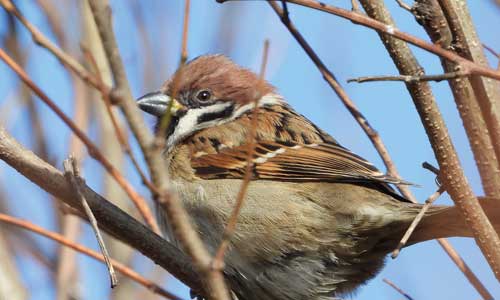
HOUSE SPARROW
(Passer domesticus)
The house sparrow is known for its lively song, which can vary significantly depending on the region and social conditions. Males sing to attract females and to mark their territory.
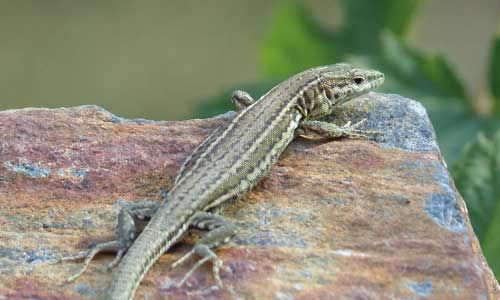
IBERIAN WALL LIZARD
(Podarcis hispanicus)
It’s a reptile that can be found in many areas of Catalonia. It’s common in fields, walls, roadsides and even trees. The important thing is that these places have areas for sunbathing and shelters to hide in case of danger.

European bee-eater
(Merops apiaster)
It is an unmistakable bird, given the multitude of colors it presents: on the chest, a blue, greenish on the belly, cinnamon head, yellow neck, etc.. It is a gregarious and sociable bird.
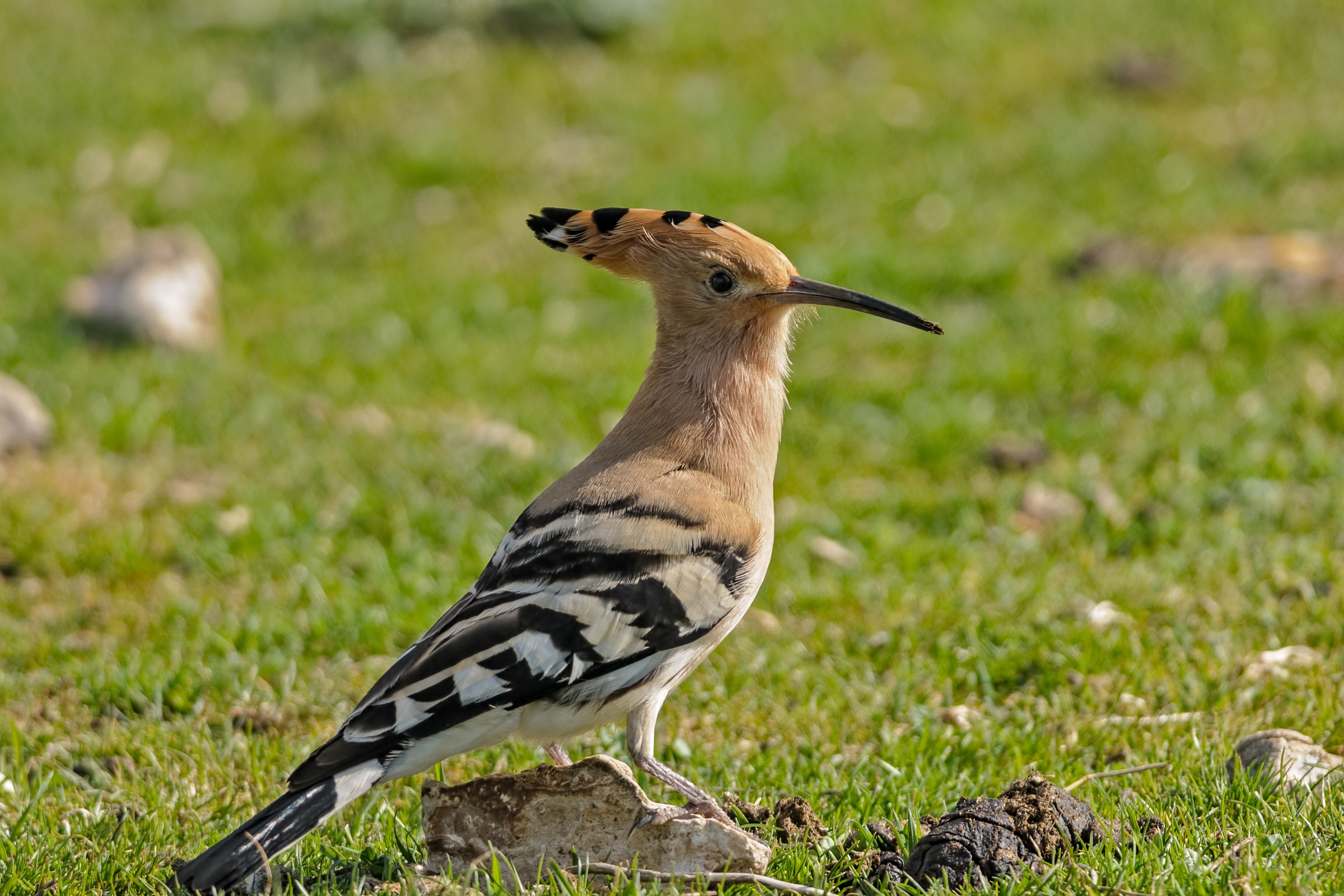
HOOPOE
(Upupa epops)
This is a bird very easy to recognize with its attractive plumage and its characteristic song. What stands out most about this bird is the crest on its head and its long curved bill.
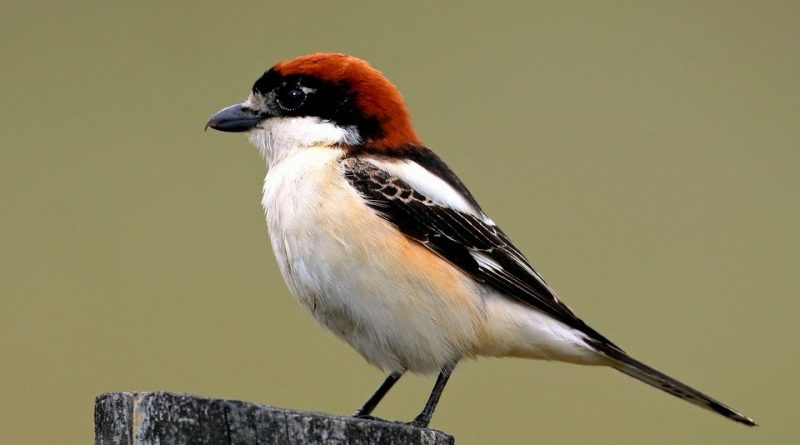
Woodchat shrike
(Lanius senator)
Males have white underparts while females have whitish underparts and scale-like spots. Often both sexes sing in duet, the male on an exposed perch and the female under cover.

Mallard duck
(Anas plathyrhynchos)
This bird is distinctive because of its green head and neck. They are a noisy species, with males emitting a high-pitched, nasal honking squawk, while females produce the deeper quack that is generally attributed to ducks.
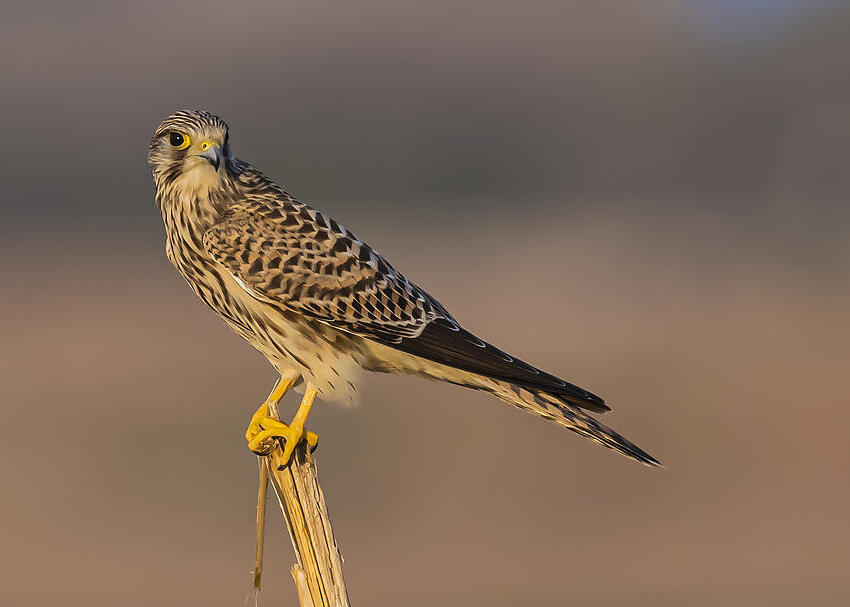
Common kestrel
(Falco tinnunculus)
The common kestrel is small compared to other raptors but is still larger than most birds. It has russet-colored wings with black spots and a long tail that is very distinctive. It is a diurnal bird of prey and easy to see.

Barn swallow
(Hirundo rustica)
The swallow’s upperparts are metallic blue and its forehead, chin and throat are reddish. A thick dark blue stripe separates the throat from the whitish breast and abdomen.
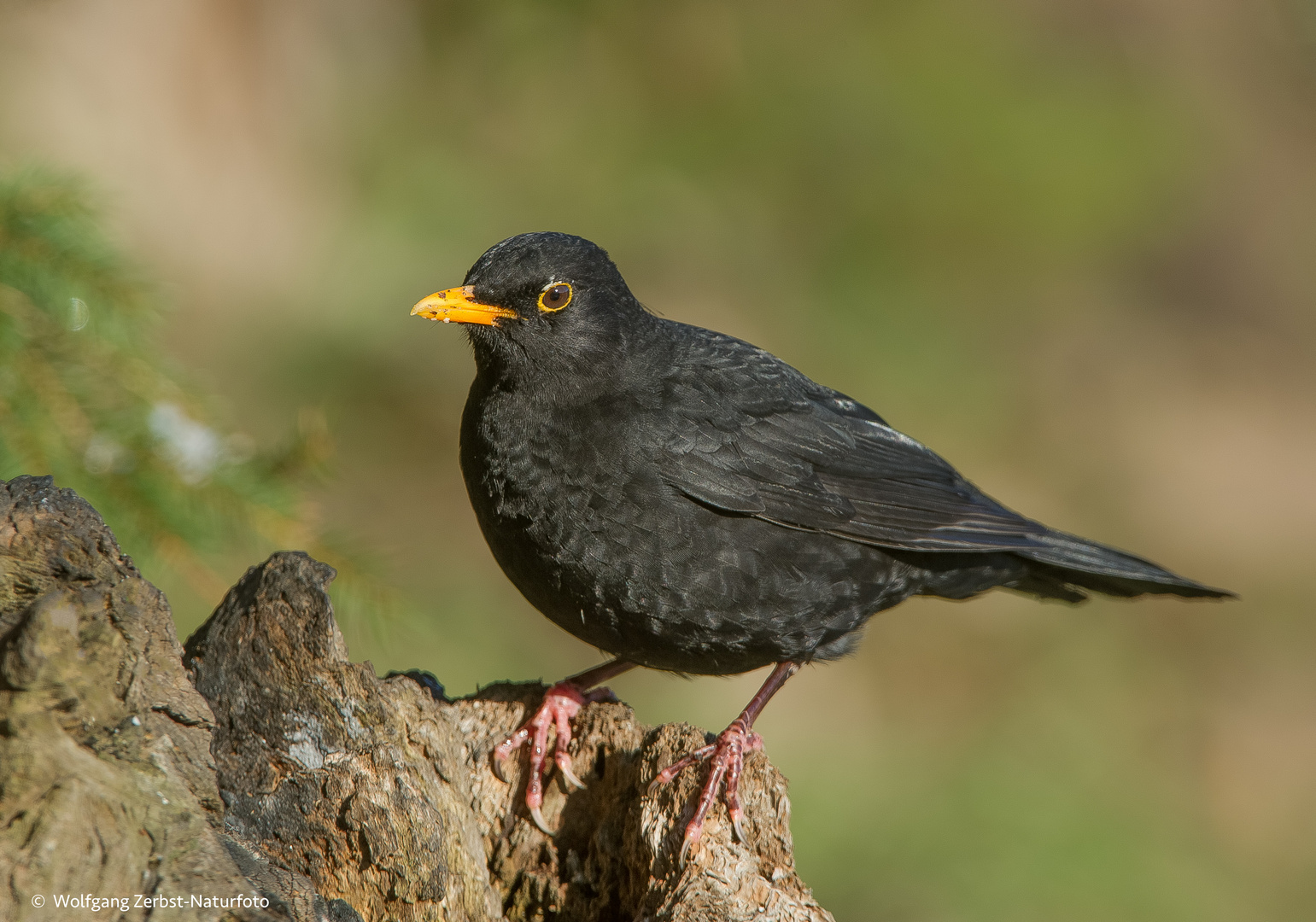
Common blackbird
(Turdus merula)
Male and female blackbirds have a territorial behavior at the nesting site, each with a different aggressiveness. Their melodious song is unmistakable.

Common swifts
(Apus apus)
This bird is a master of fast, agile flight. They eat, sleep and copulate in flight. They perch only to lay eggs, incubate them and raise their chicks. They remain in uninterrupted flight for nine months of the year.
